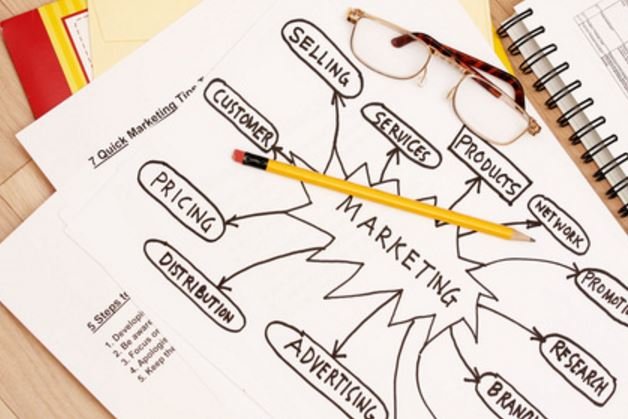Think that Channel Marketing and Inbound Marketing are unrelated? The importance of connecting these two strategies becomes more apparent as your channel program grows. Inbound content marketing is proving to be a true paradigm shift in the world of marketing, an approach which is flexible enough to be applied to virtually any form of marketing today. As businesses become more global, we're now seeing content marketing spread around the world and is adopted in a wide variety of industries. Chances are this includes yours.
What makes this inbound \ channel marketing convergence interesting is that it offers several potential permutations. Materials can be made targeting partners, targeting customers, or even a mixture of the two. This gives businesses a lot of options in the creation of content, as well as bringing plenty of opportunity to re-purpose materials across different channels for greater marketing ROI.
Breaking It Down: Five Ways To Look At Converged Inbound Channel Marketing
There are five basic strategies that can be deployed here, or freely mixed-and-matched, which all aim to achieve different goals within a channel partner ecosystem.
I. To-Partner
To-Partner inbound channel marketing is effectively the same as standard inbound marketing, treating channel partners as the target audience. An example of targets here would be retailers actively seeking out new brands to carry.
Good content would focus on the positive aspects of your brand as partner, not just the positives of your product. You would be selling yourself and making you look more appealing to sales channels who have a lot of options in brands they could potentially carry, as well as keeping hold of their mindshare.
READ MORE: CMO's Guide to Managing an Indirect Sales Channel
II. Through-Partner
Through-Partner inbound marketing is largely aimed at making life easier for your partners. You create materials, which they leave largely unaltered (aside from co-branding) and pass on to their own leads and customers. Through-Partner content strategies also give you considerably more control over the presentation of your product, and help ensure your partners stay on-message.
There are a lot of options here, including blogs, emails, video presentations, or even demos. Plus, since many smaller partners lack the manpower or budget for extensive content investment, this strategy will ultimately pay off for both you and them.
III. With-Partner
With-Partner content is created collaboratively, combining efforts to create content that has the proverbial 'best of both worlds.' The target is almost always the end customer\clients.
Possible examples are numerous. A manufacturer might be largely unaware of the specifics of selling their product to customers. With-Partner materials would combine manufacturer-created specifications with sales information developed by the 'on-the-ground' sales team to overcome objections and pain points. Or, videos could be collaboratively developed, with material filmed both at the manufacturing plant and at local sales offices, giving a full overview of the company ecosystem for potential buyers.
IV. For-Partner
For-Partner content is developed almost wholly by the top-level company for the benefit of partners. In other words, a manufacturer openly promoting some of their own channel partners. For example, many franchise-based brands will do "highlight" blogs shining a spotlight on a particular local franchise, thus driving traffic towards that partner.
This is a good idea in content marketing terms, but may create political problems within the ecosystem if other partners feel left out. However, this also makes a great reward to offer for your top-performing partners. There should be a perception of fairness however it's implemented, to prevent hurt feelings.
V. Internal-Partner
Finally, there are Internal-Partner materials. These are materials which are solely for internal use with a partner company, and would rarely (if ever) be seen by the public. Most training materials would fall under this heading, as well as more specific documents such as sales scripts or troubleshooting guides.
These could sometimes be part of To-Partner materials, used to demonstrate how easy you are to work with. However, their production and dissemination will likely continue throughout the partnership. If a company has a good Channel Relationship Management software package, they can create a central repository of such materials that all partners can refer to whenever they need it. This creates lasting long-term value for partners.
Bridging Channel and Inbound Marketing Is Win-Win
In short, if you're still thinking of inbound content marketing as solely a customer-facing activity, you might consider broadening your horizons. Looking at content marketing as a full-ecosystem activity opens up many new possibilities for pushing content out there. Once it's created, such content can be used and reused many times, in many different formats, across the ecosystem.
Plus, having a large repository of content available for your partners would be a major selling point of your own, making it easier for them to connect with their own customers.
It's the next logical step for content marketing, and one we expect to see expanding in usage over the years to come.
An effective inbound marketing campaign is just one area of supporting your channel partners. If you are looking for more information on ways to improve your indirect sales, check out our Channel Program Blueprint.

